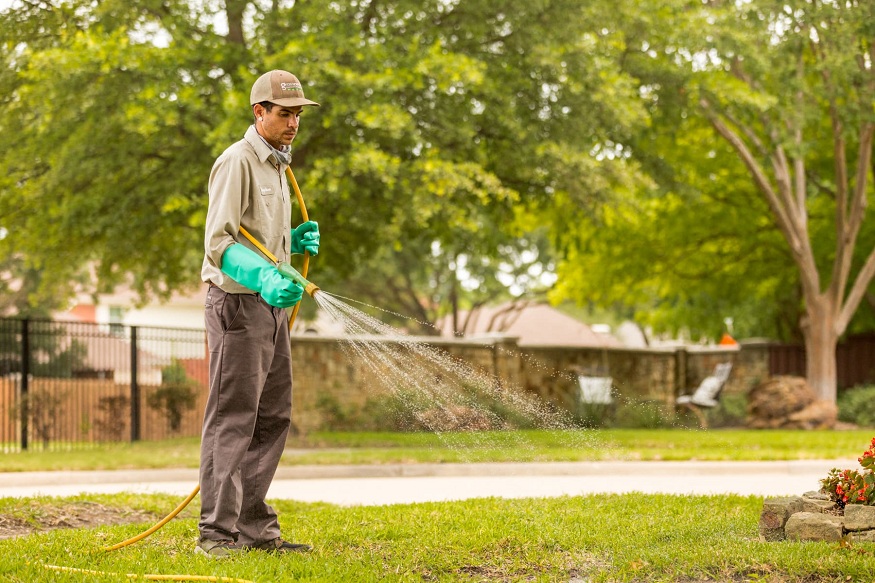Understanding Liquid Lawn Aeration: A Simple Approach to Healthier Grass
 Maintaining a lush, green lawn can often feel like a challenging task. Lawn care enthusiasts are constantly seeking effective methods to improve their grass quality, and one such solution that has gained popularity in recent years is liquid lawn aeration. This innovative process offers a less invasive, more efficient alternative to traditional lawn aeration, promising better results with less hassle. In this article, we’ll explore what liquid lawn aeration is, how it works, and the benefits it offers to homeowners looking to enhance their yards.
Maintaining a lush, green lawn can often feel like a challenging task. Lawn care enthusiasts are constantly seeking effective methods to improve their grass quality, and one such solution that has gained popularity in recent years is liquid lawn aeration. This innovative process offers a less invasive, more efficient alternative to traditional lawn aeration, promising better results with less hassle. In this article, we’ll explore what liquid lawn aeration is, how it works, and the benefits it offers to homeowners looking to enhance their yards.
What Is Liquid Lawn Aeration?
Liquid lawn aeration involves applying a specialized liquid formula to the soil of your lawn. The primary purpose of this method is to break up compacted soil, allowing air, water, and nutrients to penetrate more deeply into the root zone of your grass. This process mimics the results of traditional mechanical aeration, which uses spikes or plugs to physically create holes in the ground. However, liquid aeration does this in a way that is both efficient and less disruptive to your lawn’s surface.
The liquid solution typically contains natural ingredients, such as soil conditioners and surfactants, which help to loosen compacted soil particles and improve soil structure. As the liquid penetrates the soil, it softens the compacted areas, allowing for better root development and overall lawn health. This method also helps to reduce thatch buildup, which can often lead to a lack of oxygen and nutrients in the soil, further stunting grass growth.
How Does Liquid Lawn Aeration Work?
The process of liquid lawn aeration is relatively straightforward. First, a specialized liquid solution is applied evenly across your lawn using a sprayer. This solution is designed to break down compacted soil, facilitating the movement of air, water, and essential nutrients deep into the root zone. The liquid is absorbed by the soil, gradually softening it and making it easier for grassroots to grow and expand.
Unlike traditional aeration methods, liquid aeration does not require any heavy machinery or physical disruption to the soil surface. This makes it a less invasive and less time-consuming option. Furthermore, liquid lawn aeration is safe for the environment and won’t damage your lawn or surrounding landscaping. Once applied, the solution works quickly, and the results can often be seen in as little as a few days to a week, depending on weather conditions and the existing state of the lawn.
Benefits of Liquid Lawn Aeration
One of the biggest benefits of liquid lawn aeration is its ability to improve soil health without the need for complicated equipment. Homeowners can enjoy a healthier, more vibrant lawn without the hassle of renting expensive machinery or dealing with unsightly plugs left behind by traditional aeration methods.
1. Enhanced Soil Structure
Over time, soil can become compacted due to foot traffic, mowing, and other lawn maintenance activities. This compaction limits the movement of air, water, and nutrients to the grassroots, which ultimately harms the overall health of the lawn. Liquid lawn aeration effectively loosens compacted soil, allowing these vital elements to reach the root zone. This leads to better nutrient absorption and stronger, healthier grass.
2. Improved Water Absorption
One of the key components of lawn care is ensuring your grass gets enough water. Compact soil tends to repel water, causing it to pool on the surface rather than soaking into the ground. By improving the soil structure through liquid aeration, water can penetrate more deeply into the soil, ensuring your grass gets the hydration it needs to thrive. This can be especially helpful during dry spells or drought conditions when water conservation is critical.
3. Reduced Thatch Build-Up
Thatch is a layer of organic matter that accumulates between the soil surface and the grass. While a small amount of thatch is normal, excessive build-up can prevent water, nutrients, and air from reaching the grassroots. Liquid aeration helps to break down and reduce thatch, leading to a healthier lawn. By addressing thatch, liquid aeration also minimizes the need for dethatching, which is typically a more labor-intensive process.
4. Less Disruption to the Lawn
Traditional lawn aeration can be a disruptive process. It often involves creating holes in the ground, which can leave unsightly plugs scattered across the lawn. Liquid aeration, on the other hand, does not disturb the surface, meaning your lawn remains visually appealing throughout the process. This method is perfect for homeowners who want the benefits of aeration without the mess and disruption that comes with traditional techniques.
5. Environmentally Friendly
Because liquid lawn aeration typically uses natural ingredients and avoids heavy machinery, it is considered a more eco-friendly option compared to traditional methods. There is no need for gas-powered equipment, which reduces emissions, and the liquid formula is designed to work in harmony with the natural soil ecosystem. Homeowners can achieve a greener, healthier lawn while also being mindful of their environmental impact.
When to Apply Liquid Lawn Aeration
The best time to apply liquid lawn aeration is typically during the growing season when your grass is actively growing. Early spring or fall are ideal times, as these seasons provide the best conditions for root growth and soil improvement. Applying the solution during these times helps to maximize the benefits and ensures that your lawn receives the nutrients and care it needs to thrive.
While liquid aeration can be performed year-round, it is particularly effective when the soil is moist, as this helps the liquid solution to penetrate deeper into the soil. If your lawn is dry, it may be a good idea to water it a day or two before applying the aeration solution to ensure optimal results.
Is Liquid Lawn Aeration Right for Your Lawn?
Liquid lawn aeration is an effective solution for many homeowners, but it may not be the right fit for every situation. If your lawn is severely compacted or has a significant thatch build-up, traditional aeration methods may still be necessary. For lawns with moderate compaction or those in need of routine maintenance, liquid aeration can provide excellent results.
It is also important to consider the condition of your lawn before choosing liquid aeration. If your lawn is already healthy with strong, well-established roots, liquid aeration can serve as a great preventative measure to maintain its vitality. However, if your lawn is in poor shape or has suffered from neglect, combining liquid aeration with other lawn care techniques, such as overseeding or fertilization, may be necessary to achieve the best results.



